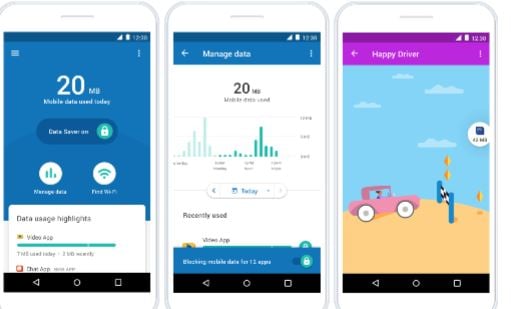Google launches 'Datally', a smart app that saves mobile data
Google has unveiled its latest product, Datally, a smart and simple Android app that helps smartphone users understand, control and save mobile data.
Datally, which works on all smartphones running Android 5.0 (Lollipop) and higher, is available for download on the Google Play Store.
It was developed to help solve one of the biggest concerns of smartphone users around the world – data usage.
The company said: “During extensive user research around the world, we found that many smartphone users worry about running out of data, especially the new generation of internet users known as the ‘Next Billion Users’.
“Not only are they constantly thinking about data balances, but they do not understand where their data is going, nor do they feel like they can control allocating data to the apps they really care about.”
The app will empower users to manage their data more effectively on their smartphones through four key features:
Data Saver
Apps frequently use data in the background for updating content and information. Datally’s Data Saver feature lets users control data on an app-by-app basis, so that data only goes to apps they care about.
Data Saver bubble
Once Data Saver is turned on, Datally’s Data Saver bubble will appear when a user goes into an app. Whenever that app uses data, the Data Saver bubble will show the current rate of data usage, and users can easily choose to block that app’s data use if things start to get out of control. The Data Saver bubble is like a speedometer for mobile data.
Personalized alerts
Datally alerts users when apps start consuming a lot of data, and it allows them to see how much data they’ve used on a daily, weekly, and monthly basis.
Wi-Fi finder
There are times when users want to use more data than they have on their mobile plans, such as when they want to watch HD videos. Public Wi-Fi is an important access point for high-bandwidth connectivity. Datally’s Find Wi-Fi feature reveals the networks nearby, rated by the Datally community. Once connected, users can rate the Wi-Fi networks based on their own experience.
“For the last few years, our Next Billion Users team has been doing a lot of research on the ground in fast-growing Internet countries like Nigeria. We have found that data is a major constraint for the next billion users”, said Juliet Ehimuan-Chiazor, Google Nigeria Country Director.
“Introducing Datally into the Nigerian smartphone market will help users understand how to control their mobile data better.
“Google tested Datally in the Philippines for most of 2017, and the insights from the product test there shaped the final app. The user research showed that people testing the app saved up to 30% of their mobile data, depending on the way they used Datally.”







/https%3A%2F%2Fblueprint-api-production.s3.amazonaws.com%2Fuploads%2Fcard%2Fimage%2F662001%2F297120a5-2521-4e0a-9918-9ce85af4a72c.jpg)



